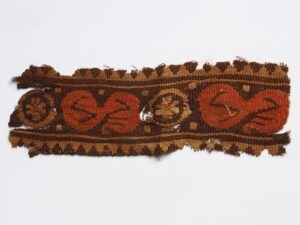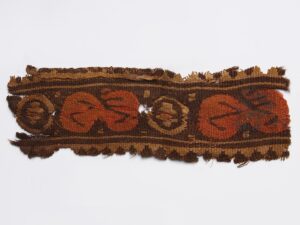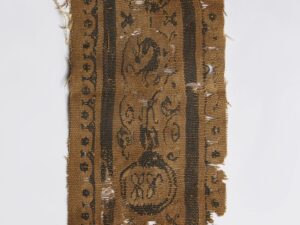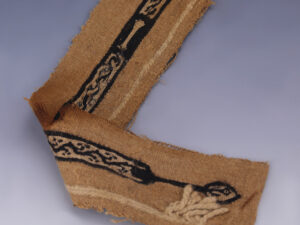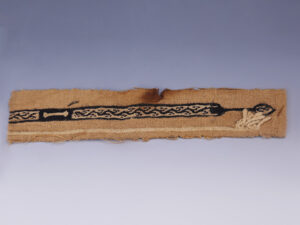The fabric was produced using the tabby and tapestry weave techniques, often using simple wide looms. Tapestry weaved adornments were woven into a basic linen fabric, allowing the weaver to achieve precise details. Linen had a long history in Egypt until the Greeks conquered the land in the 4th Century and introduced flocks of sheep. Wool was easier to dye than linen, easier to produce and provided more insulation. Despite this, linen remained the dominant fabric, and until Christianity was introduced, wool was forbidden to be used in Egyptian burials.
The earliest known examples of Coptic clothing are from 300 AD, at a time where Christianity rapidly spread through Egypt and clothing for both men and women became more decorative. Over time, ornaments were enlarged and decorated clothing became more popular. By the 6th Century, designs were becoming more stylised and depictions of humans became more admired in pictorial scenes. Natural elements, Christian symbolism and Roman iconography became more common design choices.
The fragment presented here was likely part of the sleeves of a tunic. According to Dr. Raffaele D’Amato, the wide range of military characters, the red colour of the background and the hunting parties (which were associated with martial training of soldiers) indicate this item was a fragment of a military tunic of a high-ranking officer. Tunics of this type would often be highly decorated, to show power.








